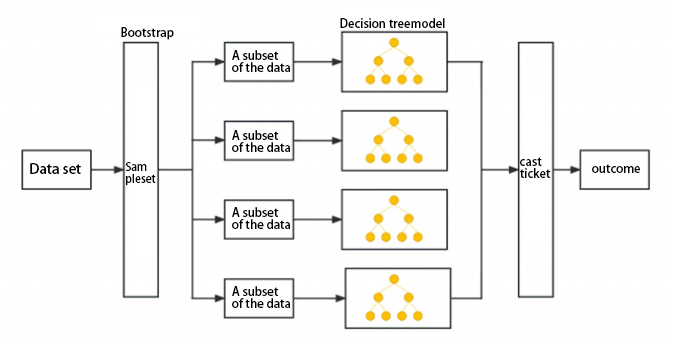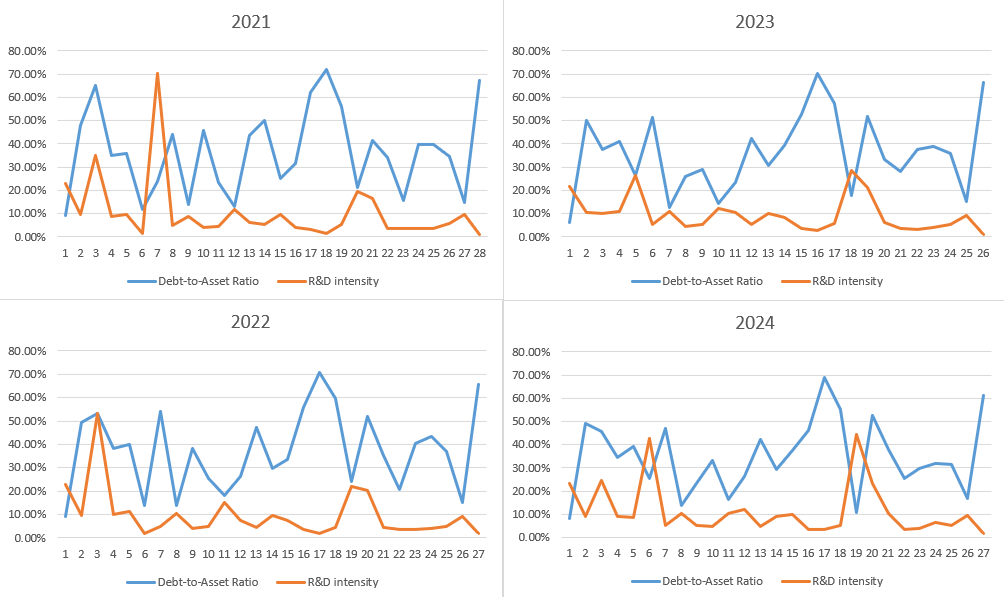

Volume 210
Published on August 2025Volume title: Proceedings of ICFTBA 2025 Symposium: Data-Driven Decision Making in Business and Economics
Hunger marketing has become a widely used marketing strategy in contemporary business by creating artificial scarcity to stimulate consumer demand, but its deeper impact on consumer behaviour and market order still needs to be systematically explored. The essence of hunger marketing is the "scarcity effect" that stimulates the desire for possession and social comparison, which leads consumers to ignore the actual needs and values and fall into irrational competition. This thesis, through literature research and case studies, shows that hunger marketing significantly enhances consumers' perception of scarcity through limited supply and time-limited rushing, which in turn triggers a sense of urgency and impulse to buy, and is especially effective for commodities with strong social attributes. However, excessive use of hunger marketing may trigger psychological resistance among consumers, such as the feeling of being manipulated, which can reduce brand loyalty in the long run. Therefore, it is necessary to balance scarcity and fairness. This study deepens the understanding of the chain relationship between scarcity and consumer behaviour, such as the moderating role of consumer anxiety and social needs. At the practical level, it provides suggestions for companies to optimise their limited-edition strategies, such as transparency control.

 View pdf
View pdf


The term planting grass originally originated from Internet buzzwords, meaning that the desire to buy is stimulated by sharing by others, and has gradually become an important phenomenon in social media marketing. With the development of social platforms such as Weibo, Douyin, Bilibili, etc., content sharing, real experience and recommendation between users have become important ways to influence consumer decisions, promoting the popularization and commercialization of planting grass behavior. Rednote enhances consumers' trust in products and influences their purchasing decisions through real user sharing and KOL and KOC planting grass content. The platform’s community interaction and intelligent recommendation mechanism further amplify the word-of-mouth effect, making it an important reference channel for consumers before shopping. This study analyzes the planting grass content and user interaction behavior on the platform to explore its influencing mechanism on consumer purchasing decisions. Using a combination of content analysis and questionnaire survey, the role of factors such as KOL/KOC, content authenticity, and platform recommendation mechanism in the planting grass process was systematically sorted out. The study found that grass-growing content significantly improved users' trust and willingness to buy, especially among young consumers. The platform's social attributes and personalized recommendations further enhanced the communication effect of grass-growing. This study helps brands optimize social media marketing strategies and provides a reference for consumers to make rational decisions.

 View pdf
View pdf


As cross-industry co-branding becomes a prevalent strategy in contemporary marketing, understanding its effects on brand equity has become increasingly important. This paper explores the strategic alliance between Xicha, a leading Chinese new-style tea brand, and Fendi, a globally recognized luxury fashion house, to assess how such collaborations influence brand awareness, image, and loyalty. Adopting a mixed-method research design, the study analyzes both consumer perception data and brand performance indicators to evaluate the outcomes of the Xicha and Fendi partnership. The results demonstrate that the collaboration enhanced Xicha’s perceived premium value and elevated its status among aspirational consumers, while Fendi successfully engaged younger, digital-native audiences in the Chinese market. However, the alliance also raised concerns regarding authenticity and brand dilution, particularly for the luxury partner. The findings provide empirical support for the effectiveness of cross-industry co-branding in reshaping brand narratives and offer practical insights for brands seeking to navigate the opportunities and risks of such partnerships in culturally dynamic markets.

 View pdf
View pdf



Real estate valuation, particularly predicting house prices, is a critical aspect of the real estate industry. This paper provides a comprehensive overview of the application of various machine learning models for predicting house expenses. Four distinct models are evaluated: Back Propagation neural network (BP), random forest (RF), seagull optimization algorithm (SOA), and lion swarm optimization-based algorithm (SLSO-BP). This research aims to identify the most effective machine learning algorithm for accurately predicting house prices, utilizing the mean square error (MSE) and R-squared (R2) as the evaluation metric. Through a comparative analysis, our findings reveal that the SLSO-BP algorithm demonstrates superiority over other predictive tools, showcasing the lowest MSE. This study contributes to the advancement of predictive modeling in real estate, offering valuable insights for practitioners, researchers, and policymakers involved in housing market analysis and decision-making.

 View pdf
View pdf


China’s consumer market presents a paradoxical picture of technological efficiency and cultural traditions coexisting side by side. Although the consumer behaviour of young groups is highly dependent on digital tools such as algorithmic recommendations and mobile payments, it is still deeply driven by cultural rules such as human relations and face culture (MianZi). This study builds an integrative framework to show how technological tools in the digital transformation and China-specific socio-cultural rules synergistically reshape the decision-making of modern Chinese consumers, in response to the shortcomings of existing theories that ignore the interaction between technology and culture. This study critically integrates classical theories such as the Technology Acceptance Model (TAM) and the Differential Mode of Association, and it uses the research methodology that combines literature analysis and case study analysis. Based on the above elements of the study, it is found that technological innovations optimise decision-making processes through transformation of information access and reinvention of payment behaviour. Meanwhile, deep socio-cultural roots, especially reconciliation mechanisms based on the logic of human emotions and conflicting values, have always constituted the deep rules of decision-making and have given rise to new forms in digital scenarios. Typical cases, such as Pinduoduo’s social e-commerce model, illustrate the deep combination of algorithmic efficiency and cultural psychology, driving consumer behaviour to elevate to emotional identity and value co-creation. This study not only breaks through the theoretical limitations of unidimensional explanations and provides new examples for understanding the unique efficiency-meaning paradox of consumers in China’s emerging markets.

 View pdf
View pdf


Blind box economy, a new consumption model that has rapidly emerged in recent years, has demonstrated a strong market growth momentum. In this consumption model, consumers have a high acceptance and preference for the uncertain experience brought by the "mystery reward" mechanism. The emotional connection established between blind box products and IP-based collectibles further strengthens consumers' purchasing motivation and willingness to continuously participate. In terms of the theoretical analysis framework of this article, it mainly relies on the basic theories of consumer psychology and combines the multi-dimensional data resources provided by social media platforms to conduct a systematic exploration and analysis of the psychological mechanism involved in the blind box consumption process. The research results show that blind box consumption behavior can, to a certain extent, trigger a series of positive psychological responses, such as the psychological stimulation stimulated by the process of opening the box, the illusionary cognitive experience of controlling the result, and the subjective emotional projection of the commodity. However, it is worth noting that behind such consumption behaviors, there are also many potential risks and adverse effects, which are specifically manifested as the gradual increase of addictive consumption tendencies, anxiety and frustration caused by uncertain results, as well as social comparison pressure resulting from the influence of others' consumption behaviors. Only through the collaborative efforts of multiple parties can the blind box economy maintain market vitality while steadily developing in a healthier, more orderly and sustainable direction.

 View pdf
View pdf


Emotion-Driven Marketing (EDM) has emerged as a novel strategy in contemporary marketing, becoming a significant tool for brands to attract consumers and stimulate consumption. By employing emotional stimuli such as advertising content, color schemes, narratives, and storytelling, brands elicit consumers' emotional responses, thereby influencing their purchase decisions and brand loyalty. Through theoretical analysis, this paper explores the application of emotion regulation theory and emotional arousal models in brand marketing, and how EDM enhances consumers' purchase intention through mechanisms like emotional arousal and emotional resonance. Analysis of specific brand case studies (e.g., White Rabbit milk candy and Safeguard soap) demonstrates that EDM plays a crucial role in enhancing brand identity, increasing market competitiveness, and fostering long-term consumption behaviors. Furthermore, the paper identifies limitations of emotional marketing strategies, such as the potential oversimplification of brand image and the risk of consumer aversion due to over-reliance. Future research should further investigate the effects of EDM across diverse consumer segments.

 View pdf
View pdf



The biomedical and pharmaceutical industry, being intrinsically tied to human life and health security, currently demonstrates a development paradigm predominantly propelled by biopharmaceutical innovation and cross-disciplinary technological convergence, with sustained growth in Research and Development (R&D) investment intensity observed across the sector. To sustain competitive dominance in the marketplace, enterprises must continuously allocate substantial capital towards pioneering technologies and next-generation product development. However, the substantial allocation of funds to R&D inevitably triggers the sunk cost effect, exerting measurable impacts on corporate profitability. This aspect of the issue has not yet been comprehensively analyzed or thoroughly studied within academic and industry research frameworks. Based on this background, this article will partially supplement the research gaps in this area by combining relevant data. Based on biomedical and pharmaceutical enterprises, this article analyzes the impact of R&D intensity on financial risk and R&D intensity on asset utilization, and summarizes the relationship between R&D intensity and corporate profits. The findings reveal that there is an inverse relationship between R&D intensity and Debt-to-Asset Ratio, a coexistence of high R&D intensity with low Total Asset Turnover, and a nonlinear (roughly inverted U-shaped) correlation between R&D intensity and ROE. Contemporary biomedical and pharmaceutical enterprises are also roughly divided into two categories according to the effect of sunk costs: innovative biomedical and pharmaceutical firms and generic biomedical and pharmaceutical firms.

 View pdf
View pdf


International trade cooperation and outward investment are the core driving forces of global economic development, but they face multiple challenges such as insufficient effectiveness of multilateral mechanisms, fragmented regional rules, and high geopolitical risks. As the world’s largest developing country, the Belt and Road Initiative (BRI) in China is fundamentally based on the historical heritage of the ancient Silk Road civilization, integrates contemporary geo economic logic and the needs of global value chain reconstruction, and forms a unique theoretical paradigm. The BRI is not only an upgraded version of China's opening up but also provides a Chinese solution for the reshape of the global governance system and solving the development deficit. In the future, based on the theoretical and practical innovation of the BRI, each country is going to be committed to the upward trend of the global economy towards a more inclusive and resilient direction by deepening regional cooperation, improving risk management and guiding sustainable investment.

 View pdf
View pdf


As a country with a large population, China has a vast fast-moving consumer goods market. Master Kong is one of them, competing with Uni-President Enterprises, Jinmailang Beverage and other companies for market share. At the same time, scholars must always be vigilant about the impact of the takeaway industry on the fast-moving consumer goods industry, and the increasing popularity of the concept of healthy living in recent years has also posed a major challenge to the fast-moving consumer goods industry. This article will start with studying Master Kong's marketing methods to explore how Master Kong can maintain its competitiveness in adversity, while continuously increasing corporate revenue and expanding the company's influence in China and even the world. It will also study its marketing strategies, including brand co-branding and product design strategies, and communication channel layout to analyze the impact on specific consumer behaviors. Of course, this article also gives relevant examples and makes reference suggestions and hopes that Master Kong will continue to maintain its competitiveness in the future and write its own story.

 View pdf
View pdf




